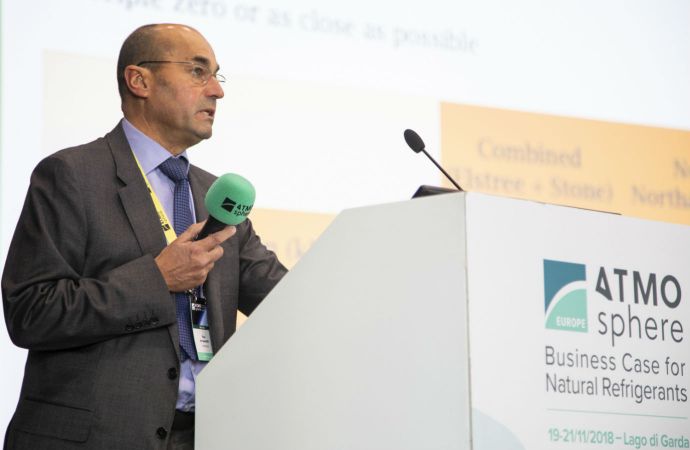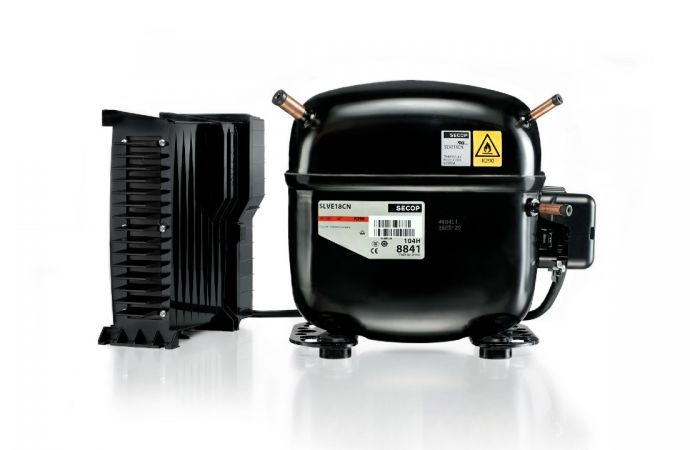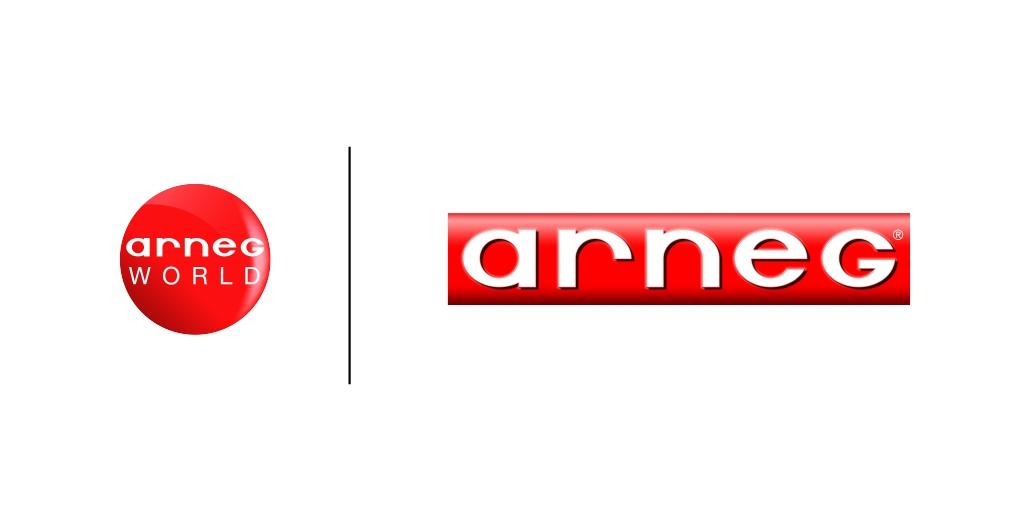CO2 is becoming increasingly competitive with ammonia in industrial HVAC&R applications, hears ATMOsphere Europe.

Paul Arrowsmith, Sainsbury's speaking during the 'Industrial Refrigeration' session at ATMOsphere Europe 2018.
Photo Credit: Ben Beech
CO2 is becoming increasingly competitive with ammonia in industrial refrigeration applications, while propane chillers are also making inroads into this sector, heard participants in the industrial refrigeration session at ATMOsphere Europe 2018 yesterday.
Verona distribution centre
SCM Frigo, meanwhile, recently completed a 2.5 MW CO2 transcritical installation in a distribution centre for an international retailer with over 600 convenience stores in Italy.
The plant, located in Verona, was commissioned in September. “Ammonia is widely used in this size of application,” but CO2 can also be used as both the primary and secondary refrigerant,” Mirko Bernabei, technical director, SCM Frigo, told the conference.
ATMOsphere Europe was organised by shecco – publisher of the website – and held in Riva del Garda on the shores of Italy’s Lake Garda (19-21 November).
“In the climate of this particular installation, CO2 competes well with ammonia systems in terms of overall energy consumption,” Bernabei said.
He drew attention to the potential for parallel compression, ejectors and adiabatic cooling to optimise a CO2 transcritical system’s efficiency.
“Technology improvement in compressor and components in general are making CO2 the alternative choice to ammonia in industrial applications up to 5MW," Bernabei argued.
“With both ammonia and CO2 refrigerants, high quality heat recovery is possible to provide heating loads up to 60°C,” he said.
Bernabei argued that from a cycle efficiency perspective, “ammonia is still the best performer – especially in warmer climate regions”. “Further improvements in CO2 technology, like ejectors, will help to close the gap – making CO2 attractive everywhere,” he said.
Technology improvement in compressor and components in general are making CO2 the alternative choice to ammonia in industrial applications up to 5 MW.”
– Mirko Bernabei, SCM Frigo
Sainsbury’s harnessing ammonia
Paul Arrowsmith, refrigeration design manager at UK retailer Sainsbury’s, said “most of our industrial [cold storage facilities] are ammonia”.
The newest Sainsbury’s cold storage facility in Northampton combines previous locations in Elstree and Stone and is fitted with low-charge ammonia technology.
By using an energy-efficient system and combining the two facilities into one, Sainsbury’s saved £580,068 (€650,314) in energy costs, giving a total energy reduction of 30% compared to the combined total of the previous two plants.
Ammonia/CO2 cascade in Tarquina, Italy
Enrico Zambotto, refrigeration director, Arneg similarly found that installing an ammonia/CO2 cascade system in an 18,400 m2 cold storage warehouse in Tarquinia, Italy delivered impressive energy performance. “The ammonia is only for the condensation of the CO2. CO2 is pumped into the high coolers in different rooms,” he explained.
Zambotto compared the system to a worldwide benchmark study done by J.Evans et al. in 2015 on ‘Specific consumption index per unit of volume’ in 439 cold stores.
Compared to this baseline, the Tarquinia system’s energy consumption was, “62% below the world average, 58% below the European average, and 46% below the Italian average, thanks to energy efficiency solutions adopted”.
Optimising the fan-based air coolers, improving the insulation, and installing fully LED lighting and automatic door control in the cold store will also have played a role in reducing the warehouse’s energy consumption.
Ammonia and CO2 were not the only natural refrigerants shown to deliver impressive energy performance in industrial applications.
Propane installation in Sicily
Simonegatto, a producer of citrus-based essential oils and juices, opted for a propane chiller to provide low-temperature (-32°C) and medium-temperature (-5°C) cooling during the extraction process.
“The chiller, designed and installed by Euroklimat, is able to provide cooling for two parts of the industrial process,” Giulia Fava, said product developer at Euroklimat.
Fava expected the energy savings to cover the cost of the investment in under three years, with the propane chiller delivering energy savings compared to the previously installed R449A system.
She nonetheless noted that regulatory barriers are still holding back hydrocarbons from fulfilling their potential in industrial applications. “There are still many barriers [to install] hydrocarbon units in schools, hospitals,” she said. “Standards are not on our side in Italy."
Related stories





